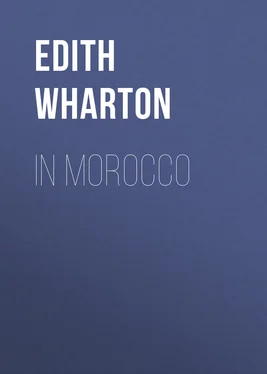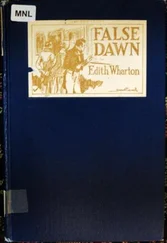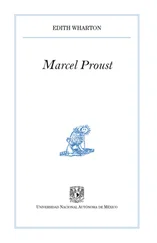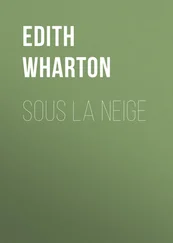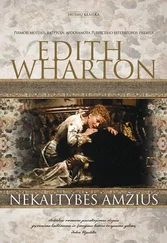Edith Wharton - In Morocco
Здесь есть возможность читать онлайн «Edith Wharton - In Morocco» — ознакомительный отрывок электронной книги совершенно бесплатно, а после прочтения отрывка купить полную версию. В некоторых случаях можно слушать аудио, скачать через торрент в формате fb2 и присутствует краткое содержание. Жанр: Путешествия и география, История, foreign_edu, foreign_antique, foreign_prose, на английском языке. Описание произведения, (предисловие) а так же отзывы посетителей доступны на портале библиотеки ЛибКат.
- Название:In Morocco
- Автор:
- Жанр:
- Год:неизвестен
- ISBN:нет данных
- Рейтинг книги:5 / 5. Голосов: 1
-
Избранное:Добавить в избранное
- Отзывы:
-
Ваша оценка:
- 100
- 1
- 2
- 3
- 4
- 5
In Morocco: краткое содержание, описание и аннотация
Предлагаем к чтению аннотацию, описание, краткое содержание или предисловие (зависит от того, что написал сам автор книги «In Morocco»). Если вы не нашли необходимую информацию о книге — напишите в комментариях, мы постараемся отыскать её.
In Morocco — читать онлайн ознакомительный отрывок
Ниже представлен текст книги, разбитый по страницам. Система сохранения места последней прочитанной страницы, позволяет с удобством читать онлайн бесплатно книгу «In Morocco», без необходимости каждый раз заново искать на чём Вы остановились. Поставьте закладку, и сможете в любой момент перейти на страницу, на которой закончили чтение.
Интервал:
Закладка:
For the same reason the spectacle unrolling itself below us took on a blessed air of unreality. Any normal person who has seen a dance of the Aïssaouas and watched them swallow thorns and hot coals, slash themselves with knives, and roll on the floor in epilepsy must have privately longed, after the first excitement was over, to fly from the repulsive scene. The Hamadchas are much more savage than Aïssaouas, and carry much farther their display of cataleptic anæsthesia; and, knowing this, I had wondered how long I should be able to stand the sight of what was going on below our terrace. But the beauty of the setting redeemed the bestial horror. In that unreal golden light the scene became merely symbolical: it was like one of those strange animal masks which the Middle Ages brought down from antiquity by way of the satyr-plays of Greece, and of which the half-human protagonists still grin and contort themselves among the Christian symbols of Gothic cathedrals.
At one end of the square the musicians stood on a stone platform above the dancers. Like the musicians in a bas-relief they were flattened side by side against a wall, the fife-players with lifted arms and inflated cheeks, the drummers pounding frantically on long earthenware drums shaped like enormous hour-glasses and painted in barbaric patterns; and below, down the length of the market-place, the dance unrolled itself in a frenzied order that would have filled with envy a Paris or London impresario.
In its centre an inspired-looking creature whirled about on his axis, the black ringlets standing out in snaky spirals from his haggard head, his cheek-muscles convulsively twitching. Around him, but a long way off, the dancers rocked and circled with long raucous cries dominated by the sobbing booming music; and in the sunlit space between dancers and holy man, two or three impish children bobbed about with fixed eyes and a grimace of comic frenzy, solemnly parodying his contortions.
Meanwhile a tall grave personage in a doge-like cap, the only calm figure in the tumult, moved gravely here and there, regulating the dance, stimulating the frenzy, or calming some devotee who had broken the ranks and lay tossing and foaming on the stones. There was something far more sinister in this passionless figure, holding his hand on the key that let loose such crazy forces, than in the poor central whirligig who merely set the rhythm of the convulsions.
The dancers were all dressed in white caftans or in the blue shirts of the lowest classes. In the sunlight something that looked like fresh red paint glistened on their shaved black or yellow skulls and made dark blotches on their garments. At first these stripes and stains suggested only a gaudy ritual ornament like the pattern on the drums; then one saw that the paint, or whatever it was, kept dripping down from the whirling caftans and forming fresh pools among the stones; that as one of the pools dried up another formed, redder and more glistening, and that these pools were fed from great gashes which the dancers hacked in their own skulls and breasts with hatchets and sharpened stones. The dance was a blood-rite, a great sacrificial symbol, in which blood flowed so freely that all the rocking feet were splashed with it.
Gradually, however, it became evident that many of the dancers simply rocked and howled, without hacking themselves, and that most of the bleeding skulls and breasts belonged to negroes. Every now and then the circle widened to let in another figure, black or dark yellow, the figure of some humble blue-shirted spectator suddenly "getting religion" and rushing forward to snatch a weapon and baptize himself with his own blood; and as each new recruit joined the dancers the music shrieked louder and the devotees howled more wolfishly. And still, in the centre, the mad marabout spun, and the children bobbed and mimicked him and rolled their diamond eyes.
Such is the dance of the Hamadchas, of the confraternity of the marabout Hamadch, a powerful saint of the seventeenth century, whose tomb is in the Zerhoun above Moulay Idriss. Hamadch, it appears, had a faithful slave, who, when his master died, killed himself in despair, and the self-inflicted wounds of the brotherhood are supposed to symbolize the slave's suicide; though no doubt the origin of the ceremony might be traced back to the depths of that ensanguined grove where Mr. Fraser plucked the Golden Bough.
The more naïve interpretation, however, has its advantages, since it enables the devotees to divide their ritual duties into two classes, the devotions of the free men being addressed to the saint who died in his bed, while the slaves belong to the slave, and must therefore simulate his horrid end. And this is the reason why most of the white caftans simply rock and writhe, while the humble blue shirts drip with blood.
The sun was setting when we came down from our terrace above the market-place. To find a lodging for the night we had to press on to Meknez, where we were awaited at the French military post; therefore we were reluctantly obliged to refuse an invitation to take tea with the Caïd, whose high-perched house commands the whole white amphitheatre of the town. It was disappointing to leave Moulay Idriss with the Hamadchas howling their maddest, and so much besides to see; but as we drove away under the long shadows of the olives we counted ourselves lucky to have entered the sacred town, and luckier still to have been there on the day of the dance which, till a year ago, no foreigner had been allowed to see.
A fine French road runs from Moulay Idriss to Meknez, and we flew on through the dusk between wooded hills and open stretches on which the fires of nomad camps put orange splashes in the darkness. Then the moon rose, and by its light we saw a widening valley, and gardens and orchards that stretched up to a great walled city outlined against the stars.
III
MEKNEZ
All that evening, from the garden of the Military Subdivision on the opposite height, we sat and looked across at the dark tree-clumps and moon-lit walls of Meknez, and listened to its fantastic history.
Meknez was built by the Sultan Moulay-Ismaël, around the nucleus of a small town of which the site happened to please him, at the very moment when Louis XIV was creating Versailles. The coincidence of two contemporary autocrats calling cities out of the wilderness has caused persons with a taste for analogy to describe Meknez as the Versailles of Morocco: an epithet which is about as instructive as it would be to call Phidias the Benvenuto Cellini of Greece.
There is, however, a pretext for the comparison in the fact that the two sovereigns took a lively interest in each other's affairs. Moulay-Ismaël sent several embassies to treat with Louis XIV on the eternal question of piracy and the ransom of Christian captives, and the two rulers were continually exchanging gifts and compliments.
The governor of Tetouan, who was sent to Paris in 1680, having brought as presents to the French King a lion, a lioness, a tigress, and four ostriches, Louis XIV shortly afterward despatched M. de Saint-Amand to Morocco with two dozen watches, twelve pieces of gold brocade, a cannon six feet long and other firearms. After this the relations between the two courts remained friendly till 1693, at which time they were strained by the refusal of France to return the Moorish captives who were employed on the king's galleys, and who were probably as much needed there as the Sultan's Christian slaves for the building of Moorish palaces.
Six years later the Sultan despatched Abdallah-ben-Aïssa to France to reopen negotiations. The ambassador was as brilliantly received and as eagerly run after as a modern statesman on an official mission, and his candidly expressed admiration for the personal charms of the Princesse de Conti, one of the French monarch's legitimatized children, is supposed to have been mistaken by the court for an offer of marriage from the Emperor of Barbary. But he came back without a treaty.
Читать дальшеИнтервал:
Закладка:
Похожие книги на «In Morocco»
Представляем Вашему вниманию похожие книги на «In Morocco» списком для выбора. Мы отобрали схожую по названию и смыслу литературу в надежде предоставить читателям больше вариантов отыскать новые, интересные, ещё непрочитанные произведения.
Обсуждение, отзывы о книге «In Morocco» и просто собственные мнения читателей. Оставьте ваши комментарии, напишите, что Вы думаете о произведении, его смысле или главных героях. Укажите что конкретно понравилось, а что нет, и почему Вы так считаете.
